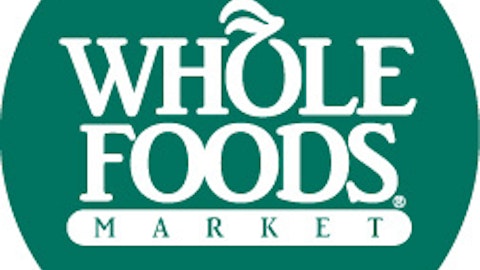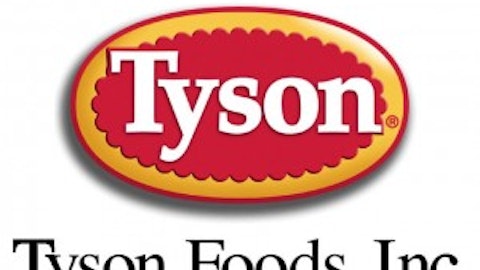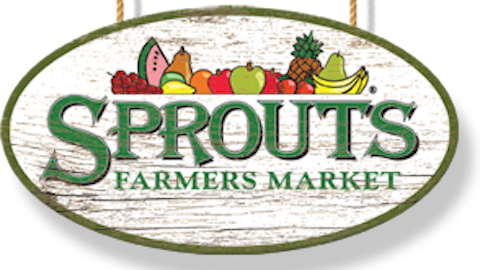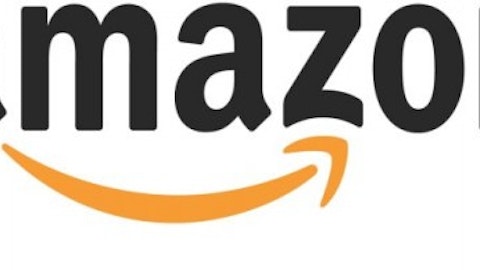Let’s face it, organic food is pricey, but that doesn’t stop folks from buying it. Whole Foods has been on a tear. In the last 5 years, they’ve gained around 425% in stock value, or about 85% annualized. If you had put $10,000 in Whole Foods Market, Inc. (NASDAQ:WFM) in June of 2008, you’d be sitting on $42,500 right now. Not bad for a store that charges folks an arm and a leg.
Organic produce and non-processed foods are more popular than ever. And as proof of this, more specialty stores are popping up left and right to meet that need (i.e. Trader Joes, Sprouts markets here in California). More competition means there’s more money to be had in the marketplace.
Why Organic? Organic foods has become more of a “catch-all” term for “healthy” foods . People are buying it simply because they think it’s more healthy than “regular” produce.
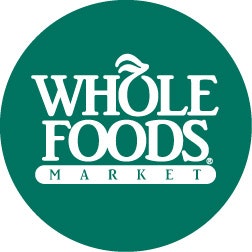
Things like less high-fructose corn syrup, saturated fats and other (undesirable or unnatural) ingredients are increasingly landing on the radars of most folks. Those said healthy benefits may or may not pertain to weight, but Americans are no less concerned and have latched onto the term. This points to a fundamental shift that is taking place in America’s health habits and diet. Awareness is the first step before major change.
Has America reached peak obesity?
After years of negative publicity (all around the world!), trying every diet known to man, America is finally coming to terms with its weight issues and deciding to seriously do something about it. The US obesity rate is currently the highest in the developed world, but the evidence is starting to show that obesity is actually leveling off. Even better news is that childhood obesity rates are also slowing, which is a good future sign.
Even fast food, long blamed as a big contributor to America’s obesity problem, is changing its tune. Just 5 years ago, McDonald’s wasn’t offering apple slices or chicken wraps .Taco bell wasn’t offering a “Fresco” option (with items of less than 10 grams of fat) on their menu.
Calorie count laws enacted from New Yorkto California probably just add to the more urgency to change.
Sprouting competition
Sprouts Farmers Markets and The Kroger Co. (NYSE:KR), besides the privately held Trader Joes, are the main competition for Whole Foods Market, Inc. (NASDAQ:WFM). Sprouts, which was also privately held, just did an initial public offering on August 1. Its stock more than doubled on the first day. They’ve so far got 163 stores, mostly in the southwest and western US, and are growing 12% annually every year.
What’s amazing about all this is the fact that Sprouts was founded in only 2003, just 11 years ago (and subsequently snatched up by Private Equity firm Apollo Global Management). This perhaps, gives you some idea of how quickly and how recently this health trend in America has been taking shape.
Sprouts is perhaps the current largest direct competitor to Whole Foods Market, Inc. (NASDAQ:WFM) though they’ve got quite a bit of catching up to do to Whole Foods current 355 store count. Besides a lower store count and lower recognition I don’t see any unique value proposition that would cause them to supplant Whole Foods Market, Inc. (NASDAQ:WFM). Their prices are the same yet they don’t offer many of the same things Whole Foods Market, Inc. (NASDAQ:WFM) does in their stores to entice customers (such as free samples or freshly cooked food areas). Sprouts is ho-hum organic. Whole Foods Market, Inc. (NASDAQ:WFM) is upscale organic.
The Kroger Co. (NYSE:KR) is a traditional grocery store that is hopping on the organic/natural food bandwagon. They weren’t on the bandwagon even 5 years ago . They are doing great in their traditional segment. Margins are low at 1.6%, but like most retail chains they are making up for it in bulk with $1.5 billion in net profits last year.
Yet competing with Whole Foods in the organic market is an entirely different animal. They’ve got more stores (2,435 at last count), but perhaps less brand recognition in this segment of the market. Nobody really thinks of “Kroger” first when thinking of where to buy organic, natural produce. They are sooner to think about the nearest farmers market here in California.
Which brings me to my next point, while Whole Foods not only has organic brand recognition, they also have a broader distribution of stores. The Kroger Co. (NYSE:KR)’s stores basically don’t exist on the West Coast, while Whole Foods Market, Inc. (NASDAQ:WFM) are everywhere to be found on the two coasts and in between . Beating Whole Foods on their own turf, or even slowing them down doesn’t seem likely from The Kroger Co. (NYSE:KR).
Growth through lower prices
There are only so many affluent communities where one can set up shop. You can only mark up your prices so high to make up for lack of total volume. Eventually, you have to expand your sales operation to include more than just the well-to-do and upper-middle class folks.
Recently, Whole Foods has announced that they will be setting up a test store in a most unlikely place: Detroit, Michigan. They are testing a new concept store for more price conscious (lower income bracket) consumers. They are also holding special classes designed to teach consumers how to buy on a budget.
If this new “price conscious” concept can take off for Whole Foods, that opens up a whole new world of expansion. They would be competing with neighborhood corner stores who have cornered the inner-city market with their high prices (due to lack of options), where before they were limited by demographics and price.
Going forward
I don’t think Whole Foods is going anywhere, they’re here to stay. The concept and company has shown to represent a fantastic investment these last few years. If their pilot, low cost stores do well, we can look forward to a roll out in many of the under served communities in the rest of the country and a potential jolt in their stock price.
The article Peak Obesity and the Rise of Whole Foods originally appeared on Fool.com and is written by Marcus Tisdale.
Marcus Tisdale has no position in any stocks mentioned. The Motley Fool recommends Whole Foods Market (NASDAQ:WFM). The Motley Fool owns shares of Whole Foods Market.
Copyright © 1995 – 2013 The Motley Fool, LLC. All rights reserved. The Motley Fool has a disclosure policy.
